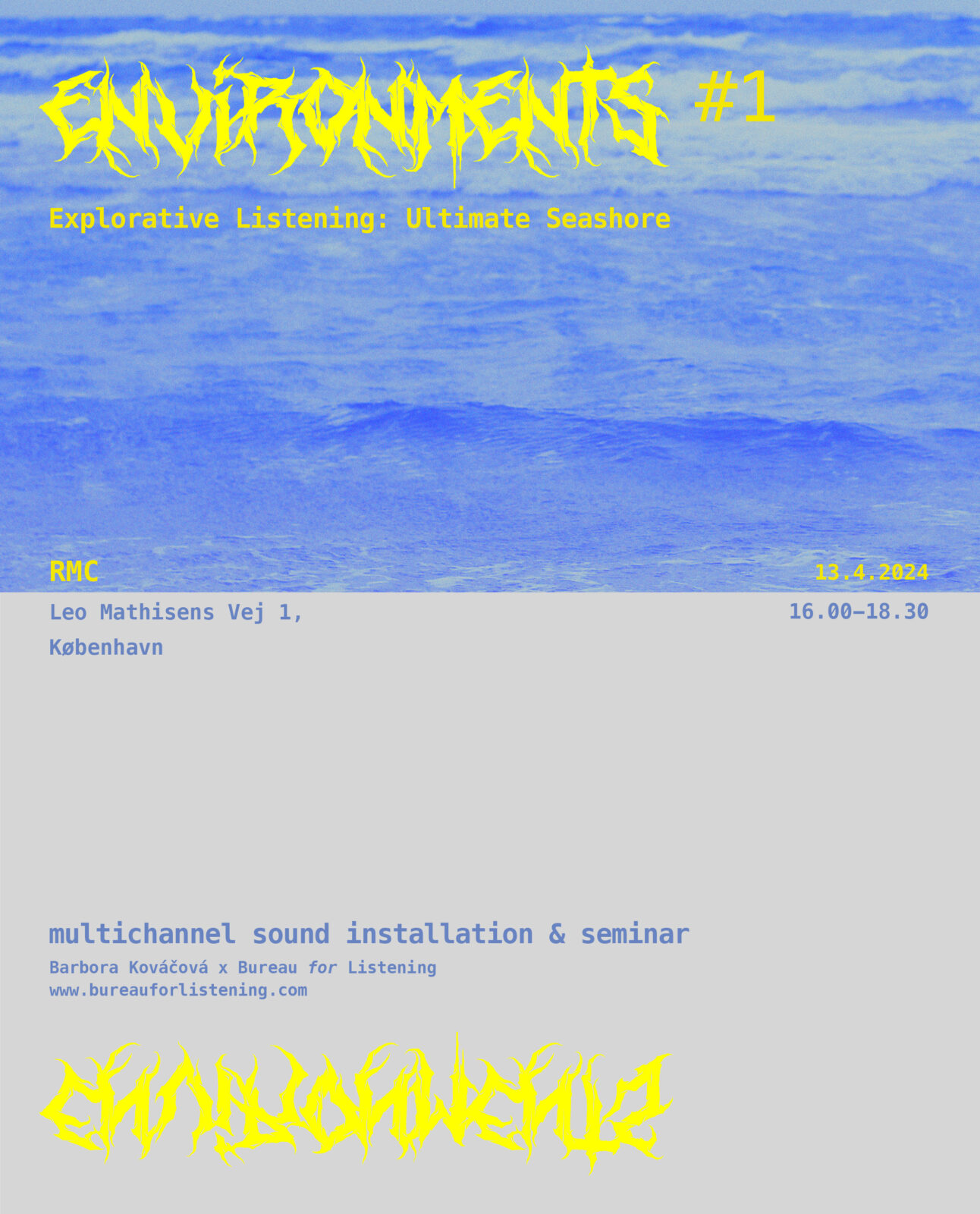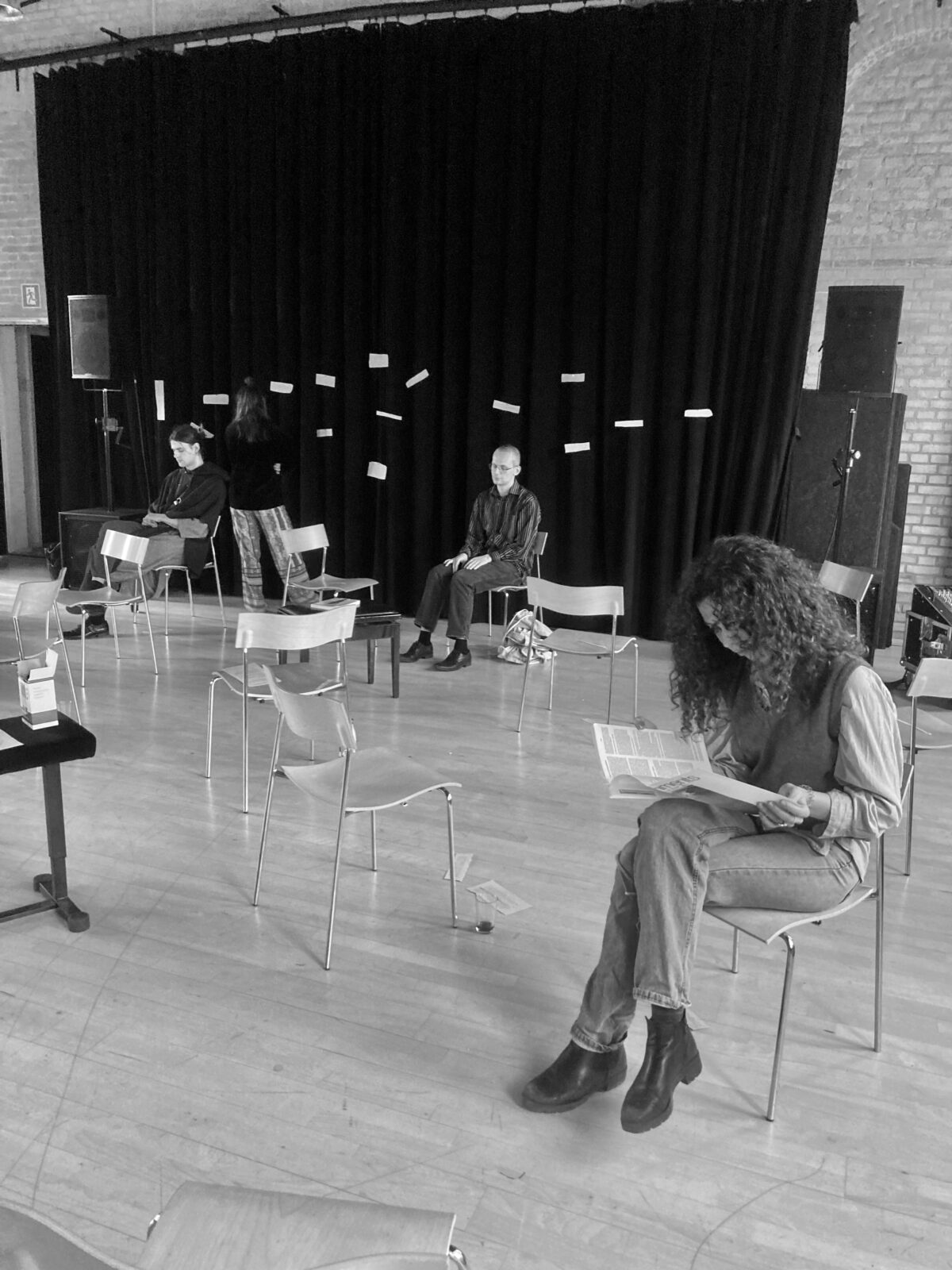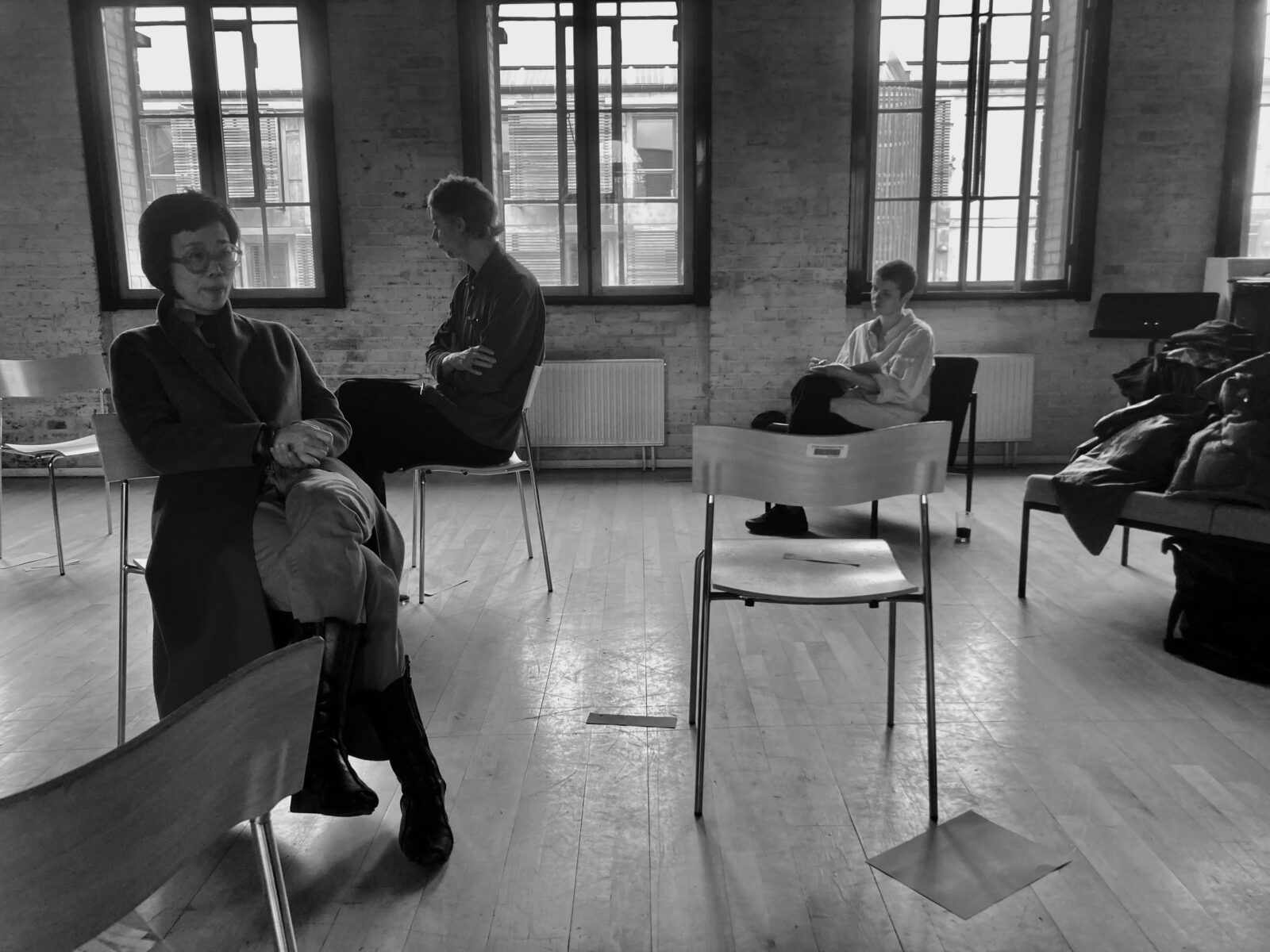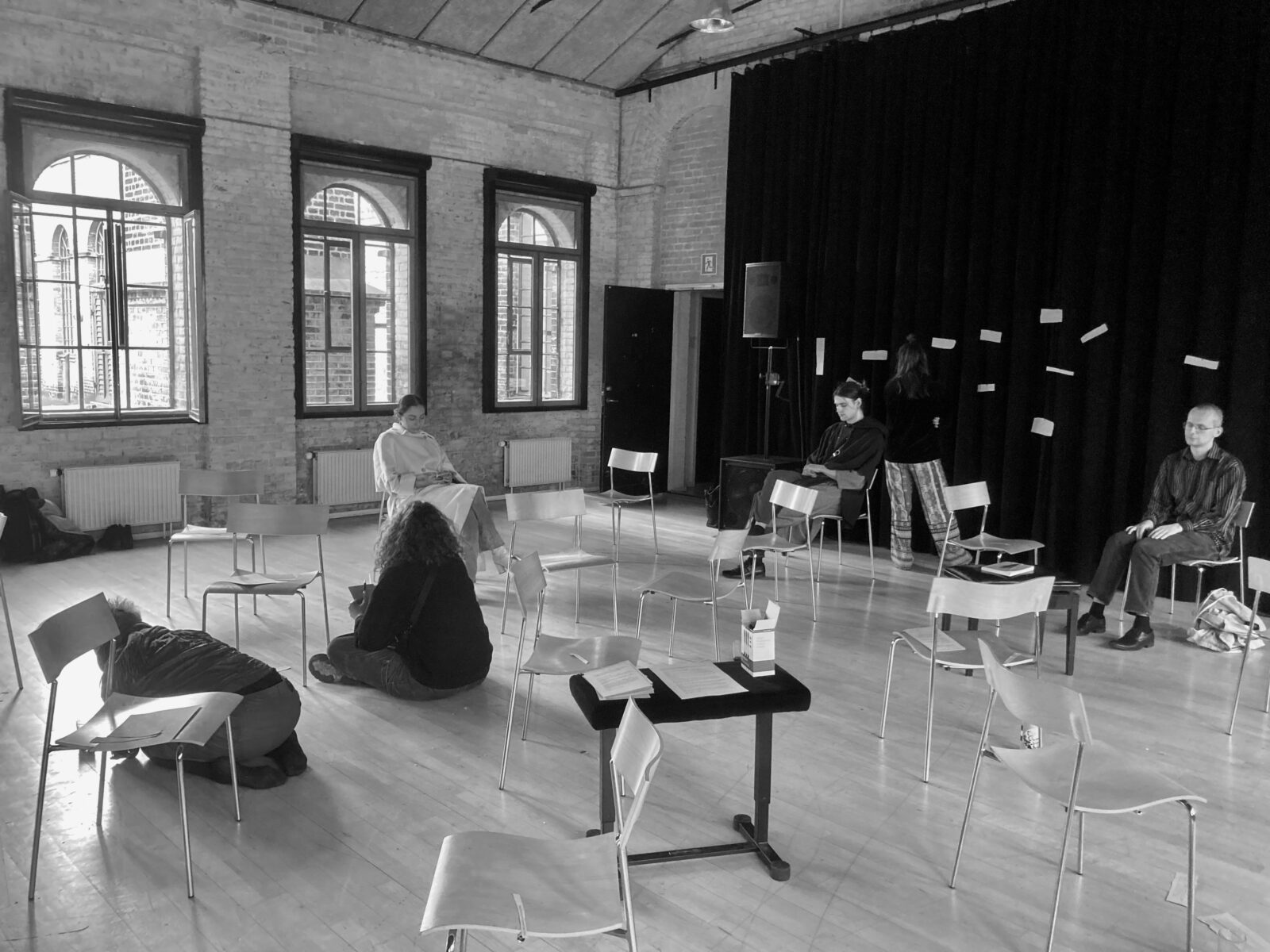Environments phase I
Environments #1: Explorative Listening: Ultimate Seashore
Place: RMC (Leo Mathisens Vej 1, 1437 København).
Date: the 13th of April 2024
Time: 16.00-18.30.

Barbora Kováčová and Bureau for Listening is pleased to invite to our first phase of our joint Environment project – a series of artistic and critical gatherings, works, formats, and more, taking a starting point in the (in)famous series of soundscapes: Environments 1-11, by Irv Teibel, published between 1969-1979.
This phase is happening due to the help and support from both Lau Halding and RMC.
The event is free, and if you wish to attend/participate, please write to: bureauforlistening@gmail.com – we only have a capacity of 20 guests – due to limited space, the need to lay down, and the intention of a more intimate experience – so we also ask, that if you as a ‘ticket-holder’ unfortunately get hindered in participating, please let us know so another can join instead.
We strive follow the hosting/accessibility/welcome policy of The Big Welcome.
The event/gathering will consist of there phases:
1) A Listening Calibration – chance to confront/experience your listening position/condition/capability upon arrival, as a way of readying/attuning/resting yourself.
2) Ultimate Seashore (Working title): a 25 minute 6-channel piece.
While the piece takes a starting point in the field recording for Environment I, Ultimate Seashore by Irv Teibel, 1969, it moves beyond and into a more progressional narrative balancing silence and extreme noise as a timeless and waving experience of dwelling in a total and overwhelming soundscape. The piece starts with inviting you to listen with your ears, and ending with listening with your whole body/mind.
3) (After) Listening Seminar, where we will engage into a collective conversation about our individual and shared experience with the piece Ultimate Seashore – a chance to learn from and listen to each other and expand our experiences through each other’s – followed-up by an more loose/larger sharing of thoughts and questions relating to listening, soundscapes/-environments, sound art, and field recordings, and how these questions/experiences are being reformulated within our contemporary situation of re-listening to nature’ – in what may may we listen to past (and perhaps now lost) soundscapes of ‘nature’, as a way to re-listen to the present alarmed voices of ‘nature’ and learn how to listen to, compose and engage with the possible sounds of the future? In what ways do we experience and understand our inter-affective, deep and slow relationship to the haunting soundscapes of the past and the becoming ghostly soundscapes of the future?

As note for how we seek to deal with/conceptualize and expand our engagement with sounds/sounding/ sound art, we would like to quote Brandon Labelle and his book Acoustic Justice, 2021:
‘Works of sound art, as I’m suggesting, often utilize site-specific methods, and a concrete approach to the textured matters of surrounding environments, in order to draw out another form of intelligibility, one that sutures materiality to the spectral or fleeting qualities of sound. In this regard, the experimental acoustics performed by sound art reworks conditions of space, bringing one into what I may term ‘poetic ecologies of resonance’ in which the animate and inanimate no longer hold a steady, dichotomous position. Rather, spatial definitions and the specific demarcations of places are resounded, giving way to other entry points. In doing so, works of sound art often search for the foreign, the hidden, the untold, and the strange found within the architectures and environments around us, emphasizing the material facticity of things being related not only to the apparent and the legible, but equally to the energies of invisible things, the alien matter of distant and even unseen locations, and the spectrality of the remembered, the non-yet or the disappeared.’
(Brandon Labelle, Acoustic Justice, 2021, pp. 81).
Documentation:
We may always ask, how to document events, performative installations and gatherings? How to document sound art and groups of people being together? This project does not seek to offer any substantial documentation – rather, we point to the impossibility in doing so. We will still add fragments; little notes and sneak peeks into what took place.
Following here is different elements that either took place or was incorporated into the first phase of the Environment project.

Guests awaiting in the gathering room while others are experience the 25 minute 6-channel piece: Ultimate Seashore #1
When the whole group of guests/participants was gathered together, they are asked to set down, or find comfort in another bodily position, and the following Listening Calibration were shared them as welcome and beginning of the event.
Placed on the seat of each of the dispersed chairs in the gathering room was a little prompt. A ‘Listen With…’ invitation.
Some of these prompts c0mes from the ongoing work with ‘Listen with…’, others were written specific for this event.
They were intended as a way to invite a more imaginative and plastic listening-understanding among the participants.
These are here collected:
- Listen with an unbearable silence.
- Listen with too early or too late solidarity.
- Listen with the movement of a river.
- Listen with the water within you.
- Listen with the unexpected pauses.
- Listen with the always already listened.
- Listen with the unsure heartbeats of a loved one.
- Listen with achlpphhh and with argghtyffulocus sempbbtytiporinos.
- Listen with a heavy and slow body.
- Listen with both the fear and comfort of surrendering to an unknownable world.
- Listen with the ears of your great-great-grandmother.
- Listen with a hidden pain.
- Listen with the ghosts of our future.
- Listen with invisible things.
- Listen with fragile and tender touches.
- Listen with a doubtful and hesitating body.
- Listen with a thick darkness.
- Listen with the destructive vibrations of your body.

Guests awaiting in the gathering room while others are experience the 25 minute 6-channel piece: Ultimate Seashore #1

Guests awaiting in the gathering room while others are experience the 25 minute 6-channel piece: Ultimate Seashore #1
While guests was awaiting in the gathering room they were among others invited to engage with Slow Reflective Listening – their notes here are private, but the invitation, written on the cover of a little booklet, was formulated as:
For those waiting to either experience the piece, or those who have finished the experience – we invite you to rest and be-with a productive gap/pause, a chance to contemplate.
–
Slow Reflective Listening
This is an invitation to enter a slow reflective listening space. Feel welcome to find somewhere comfortable, together with this sheet of paper.
How you define slow reflective listening is yours to interpret and engage with. We hope that this time and gesture will be of value to you.
The paper is intended as a gentle companion, without expectations. How you spend your time together is up to you. Maybe you will just rest, contemplate on your way of listening, maybe you have words you wish to write down, or maybe you need to lay down, with closed eyes and just listen. It is all up to you. What matters is that you take your time to listen to yourself.
Thank you for your presence.
—
All the following quotes where printed and either placed underneath dispersed chairs facing all directions or hanged with needles unto a black garment covering the end-wall of the gathering room:
(They function as different voices and critical perspective unto how to think with noise and silence, listening and soundscapes, and how our language struggles to comprehend radical immersive sound experience – when we, our body-minds become observed by the piece, rather than the observant of the piece; when a shift in perception takes place and challenges what we think we know…)
‘Silence, in a contemporary context, is not about opening up all sounds to the musical scheme or locking them into a musical time frame. Silence is about listening, listening to small sounds, tiny sounds, quiet and loud sounds out of any context, musical, visual or otherwise.’
(Salomé Voegelin, Listening to Noise and Silence, 2010:81).
‘When there is nothing to hear, so much starts to sound. Silence is not the absence of sound but the beginning of listening.’
(Salomé Voegelin, Listening to Noise and Silence, 2010:83).
‘As a gesture, as an act, listening works at figuring scenes of support enabling a process of collaboration that often extends beyond the apparent and the articulated.’
(Brandon Labelle, Acoustic Justice, 2021:4).
“Within today’s intensely polarized environment, in which political and social debate often tend toward conflict or impasse, might listening enact an intervention? While focus is often placed on making statements, capturing history, and the importance of free speech, listening is radically key to facilitating dialogue, understanding, and social transformation. To listen is to extend the boundaries of the familiar, the recognized, and the known. In addition, listening affords more egalitarian, decolonized, and ecologically-attuned relations, staggering exclusionary systems and human exceptionalism by way of empathetic, attentional, and more-than-human orientations: to hear beyond the often fixed schema of self and other. Listening is a power, it may open and hold, it may support and attend, and it may afford escape and deep friendship. And yet listening is greatly undervalued and neglected across society.”
(The Listening Biennial, written by Brandon Labelle).
“Is listening something of which philosophy is capable […] hasn’t philosophy superimposed upon listening, beforehand and of necessity, or else substituted for listening, something else that might be more on the order of understanding?”
(Jean-Luc Nancy, Listening pp. 1, 2007)
“Listening opens an important view onto understandings of agency by underscoring the political not as a drama of appearance and outspokenness alone, but rather, listening also reminds how recognition is affected by that sense of being heard, as well as the necessity to hear something differing, where listening may also strike back, in terms of mobilizing people in their desire to reconfigure the flows of power, to demand a different form of life. While emphasis is often placed on the one who speaks, on the staging of the political voice, I’m interested equally to turn attention to the one who listens – the listener as an actant, and one that lends an important force. For listening also draws us toward states of critical reflection, slowness, shared attunement, and capacities for understanding or care, all of which articulate other dimensions of power.”
(Brandon Labelle, Acoustic Justice, 2021:4).
Start with a breath, or a touch on your body.
Honor the vibrations of how you feel that touch and how you take that breath.
Honor the rhythm of this touch and breath.
Give yourself time and care to hold your body here.
[…]
Where would you like to begin?
What do you need?
Let’s start with a breath
(Ash McAskill, ‘Access and Atypical Creation’, in Slow Spatial Reader, 2021, p. 113-120).
“A different way of listening is needed. Practicing profound contemplation, silencing our hyperactive egos and letting go of control and work. By always doing something, we only accelerate and reproduce what already exists.
Question: How can we allow ourselves to be bored, rest, or wonder?”
(Alessandra Pomarico, Situating Us, p.218)
“Learning to listen, breaking something of yourself in order to code yourself with new alliances.”
(Jeanne van Heeswijk, Preparing for the Not-Yet, p.44)
“If you bring your focus to where you start, it can happen in every moment. We just have to be present, and stay there. We listen down to a deeper level that already knows a little more than we do, and then there is the connection. All the possibilities are there. We can enter at the smallest part. Where our expectations are small, but we are awake and listening.”
(Maria Blaisse & Siobhán K. Cronin, Form As Passage, p.173)
‘I will continue to state that I stare out of the window feeling withered and worn out, yet I cannot help but only love. I cannot sleep at night, but I still intend to touch the poetic skin of my existence and of the many realities of now. My fragile but truly words will be reborn again, and again, to resist the world’s might failings and falling, through the armor of these elegiac utterances.’
(B. Chattopadphyay, The Nomadic Listener, 2020:60).
‘What happens, when there is a fertile pause in speaking, thinking, looking out of the window, and coming back to the conversation with a new perspective?’
(B. Chattopadphyay, The Nomadic Listener, 2021:71).
“It’s the blanks and gaps,” she says, “that to me actually represent what poetry is – the connections between seemingly unconnected things – as if there is a place and might be a map to thought, when we know there is not.”
(Susan Howe, 1999).
“And I feel as a creator; not because I am recording or because I might be later ‘composing’ something with these sounds, but simply because I am listening to them with dedication and passion.”
(Francisco López, Wine and Dust, 2001).
THE MARROW
There was a word inside a stone.
I tried to pry it clear,
mallet and chisel, pick and gad,
until the stone was dripping blood,
but still I could not hear
the word the stone had said.
I threw it down beside the road
among a thousand stones
and as I turned away it cried
the word aloud within my ear
and the marrow of my bones
heard, and replied.
The poem The Marrow by Ursula K. Le Guin, included in her text: Deep in Admiration, 2017.
‘[…] When is it essential to make sense? / When is it essential to be sensual? / What needs to be said instead of sensed? / And what can we silent? / (Silence) / … / What can be said for conversation? / What can be left unsaid? / Is speaking a failed attempt at singing? / Is speaking a failed attempt at painting? / Is speaking a failed attempt at listening?’
(Hanne Lippard, Frames, 2019:103-105).
‘Between my heard and the sonic object/phenomenon I will never know its truth but can only invent it, producing a knowing for me.’
(Salomé Voegelin, Listening to Noise and Silence, 2010:5).
‘Focused listening is radical as it makes us ‘see’ a different world. The aesthetic materiality of sound insists on complicity and intersubjectivity and challenges not only the reality of the material object itself, but also the position of the subject involved in its generative production. The subject in sound shares the fluidity of its object. Sound is the world as dynamic, as process, rather than as outline of existence. The sonic subject belongs in this temporal flow.’
(Salomé Voegelin, Listening to Noise and Silence, 2010:36).
‘The body in noise is silent, not mute but silent. Momentarily stunned by the force of experience that impresses on him a sonic sensibility, he is estranged from his assumptions. After noise it is the body that needs to speak again to find a sharable voice and become ready for communication. But in the midst of this racket there is no language base to make his point. The body in noise can scream but not talk.’
(Salomé Voegelin, Listening to Noise and Silence, 2010:69).